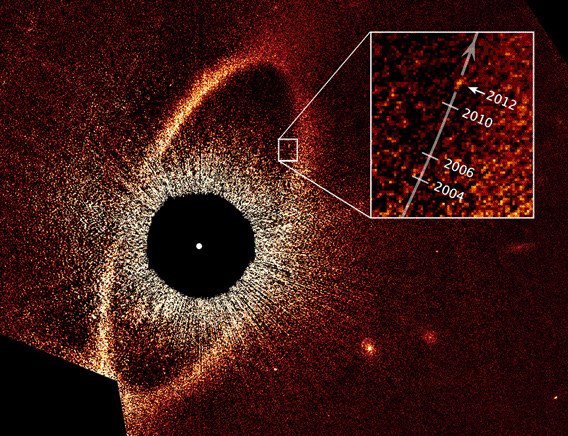We're open daily this holiday! View holiday hours
Science News
Exoplanets and Award Winners
January 9, 2013

Ryan Wyatt, Director of Morrison Planetarium and Science Visualization, reporting from second day of the American Astronomical Society (AAS) meeting in Long Beach, California…
After avoiding exoplanets in my first post from this meeting, I’ll take a stab at the topic today, but I hope to put some of the announcements in context. And luckily, one of the presentations here provides a perfect launching-off point for thinking about the current state of affairs.
Like many professional organizations, the AAS hands out awards: one example, the Newton Lacy Pierce Prize, honors outstanding achievement in observational astronomy, and award winners deliver a lecture to conference attendees about their work. This year, John A. Johnson of Caltech received the honor, and he presented a lively talk, “Hot on the Trail of Warm Planets around Cool Stars.” (If you attended the Academy’s Benjamin Dean Lecture Series last spring, you might have caught Johnson’s presentation in the Morrison Planetarium.)
In the maelstrom of exoplanet announcements (I’ll mention a few below), the big picture sometimes gets lost. But Johnson avoided getting mired in minutiae by framing his talk with the overarching process of making sense of new discoveries… The first question to ask: do the objects in question actually exist? If so, as we discover more of them, what can we learn from the statistical ensemble, or how do we think of them as a collection of objects? And finally, what are their detailed properties?
For exoplanets, the first question was answered more than twenty years ago with the discovery of a planetary system around a pulsar (not someplace you’d want to call home), followed a few years later by the announcement of a planet orbiting a main-sequence (more ordinary) star. Thus, we confirmed that exoplanets exist.
Over the intervening years, the astronomical community—Johnson included—has moved onto the second and third challenges. The statistical challenges are especially evident at this meeting.
The all-important Kepler Mission has revolutionized the exoplanet-finding business, and indeed, the Kepler team announced 461 new planetary candidates this week, bringing the total to 2,740 (these have yet to be confirmed as planets, although the success rate seems to be greater than 90%). But the mission’s primary goals all center on cataloging extrasolar planetary systems in a fundamentally statistical fashion: look at one part of the sky in great detail and then extrapolate (mathematically, responsibly) those results to the galaxy as a whole.
Astronomers thus use the Kepler data to estimate how many stars have planets with specific characteristics. Johnson’s team, for example, announced this week that our galaxy is home to “at least 100 billion planets,” roughly equivalent to the number of stars in the galaxy. Using similar techniques, astronomer Courtney Dressing announced that, “with 95% confidence, there is a transiting Earth-sized planet in the habitable zone of small star within [roughly 100 light years].” Many other groups are trying to make similar statistical predictions.
And the third stage? Investigating the detailed properties of these objects? Johnson mentioned a few of his favorites: a planet that orbits its parent star in the opposite direction that the star itself rotates, a tiny planetary system that resembles Jupiter and its moons, and of course, the system that led to his aforementioned recent announcement. And many reports from this week’s meeting also fall into this category…
Paul Kalas and James Graham, both at U.C. Berkeley announced that the hotly-debated Fomalhaut planet (pictured above) appears to follow a highly elliptical orbit around its parent star, getting as “close” 4.6 billion miles (that’s about 40 times farther than Earth ever gets from the Sun) and as far as 27 billion miles away!
Another team of astronomers has detected evidence for an asteroid belt around the star Vega. This makes Vega much like Fomalhaut, and a nifty image compares the two systems.
Much talk centers on finding planets around stars like the Sun—mostly in hopes of finding Earth-like planets where life could exist. But we know of planets around other, weirder stars (cf. my mention of pulsar planets above), and these can shed light on how our own solar system has evolved. In particular, we’re seeing evidence that many white dwarfs have been “polluted” by debris from planets that orbited them previously: our own Sun will end its life as a white dwarf, and the net result of this discovery is that Earth-like planets could be quite common.
And finally, a combined effort by two space-based observatories has given us a glimpse at the weather on a brown dwarf, and similar techniques could eventually tease out weather on exoplanets as well.
Stay tuned for more astronomy the rest of the week…
Image: NASA, ESA, and P. Kalas (University of California, Berkeley and SETI Institute)